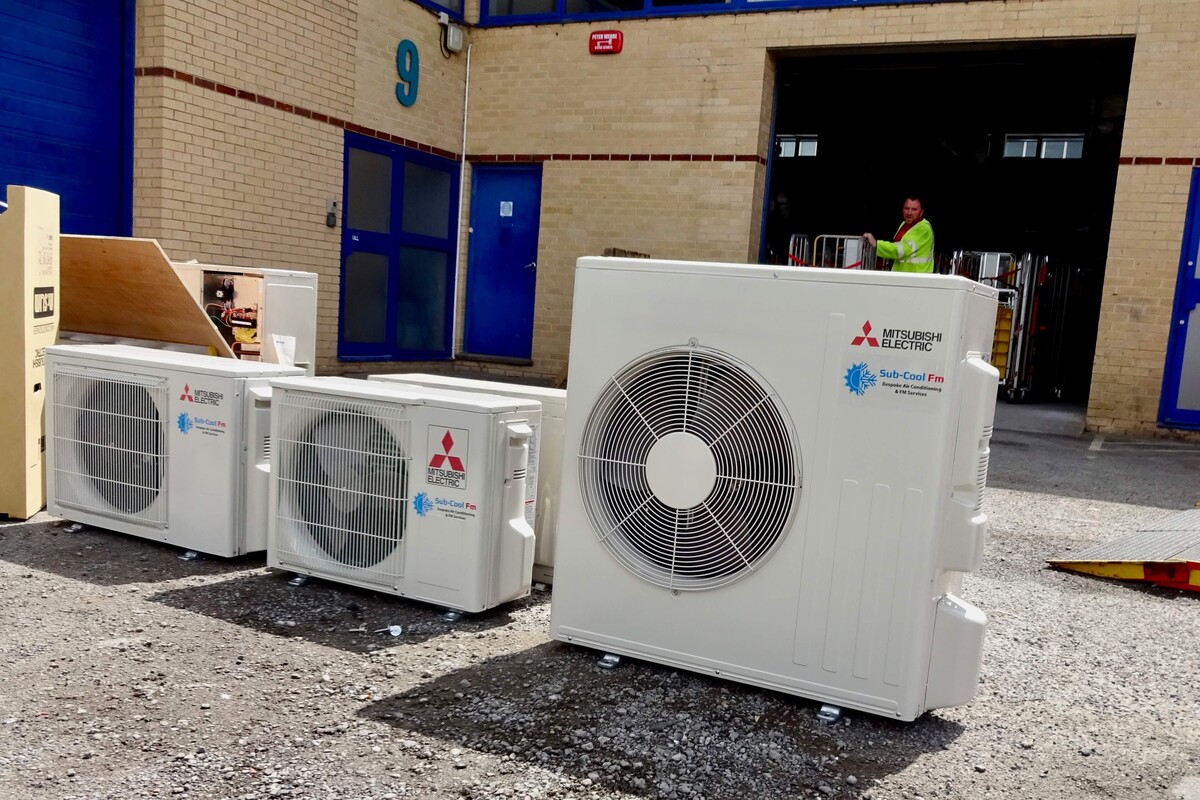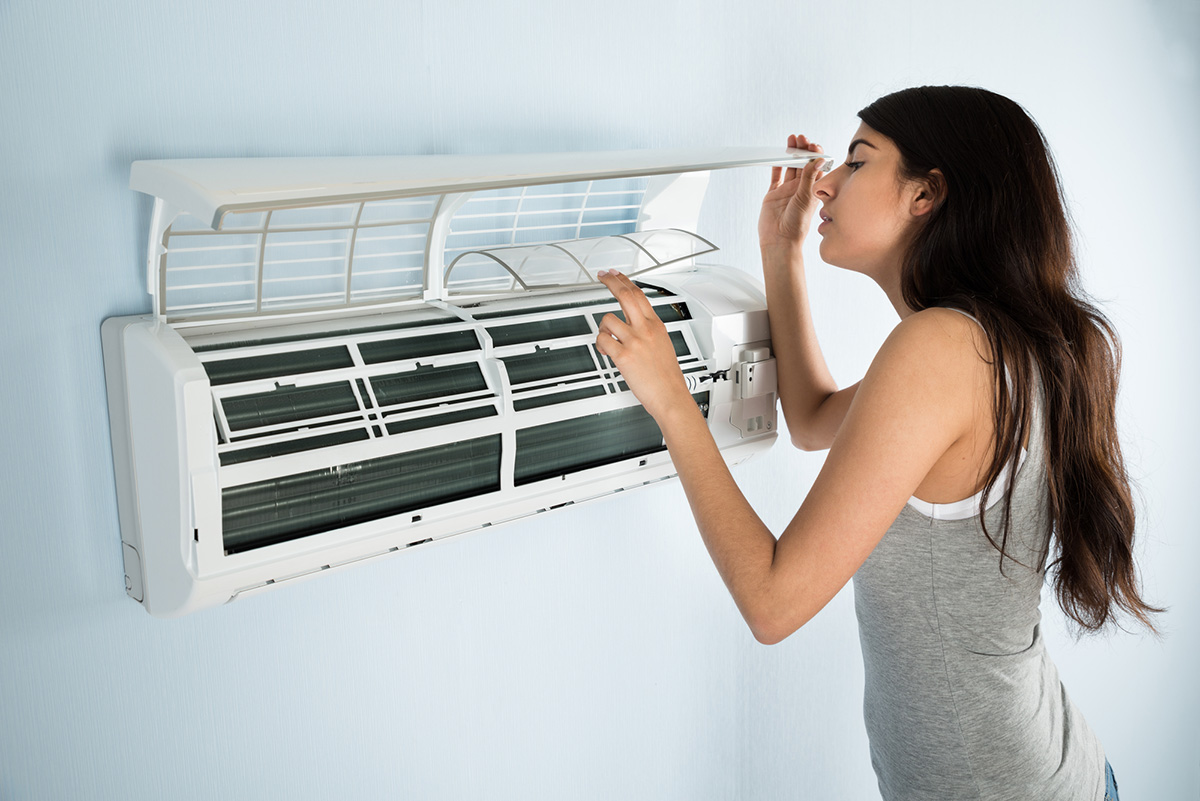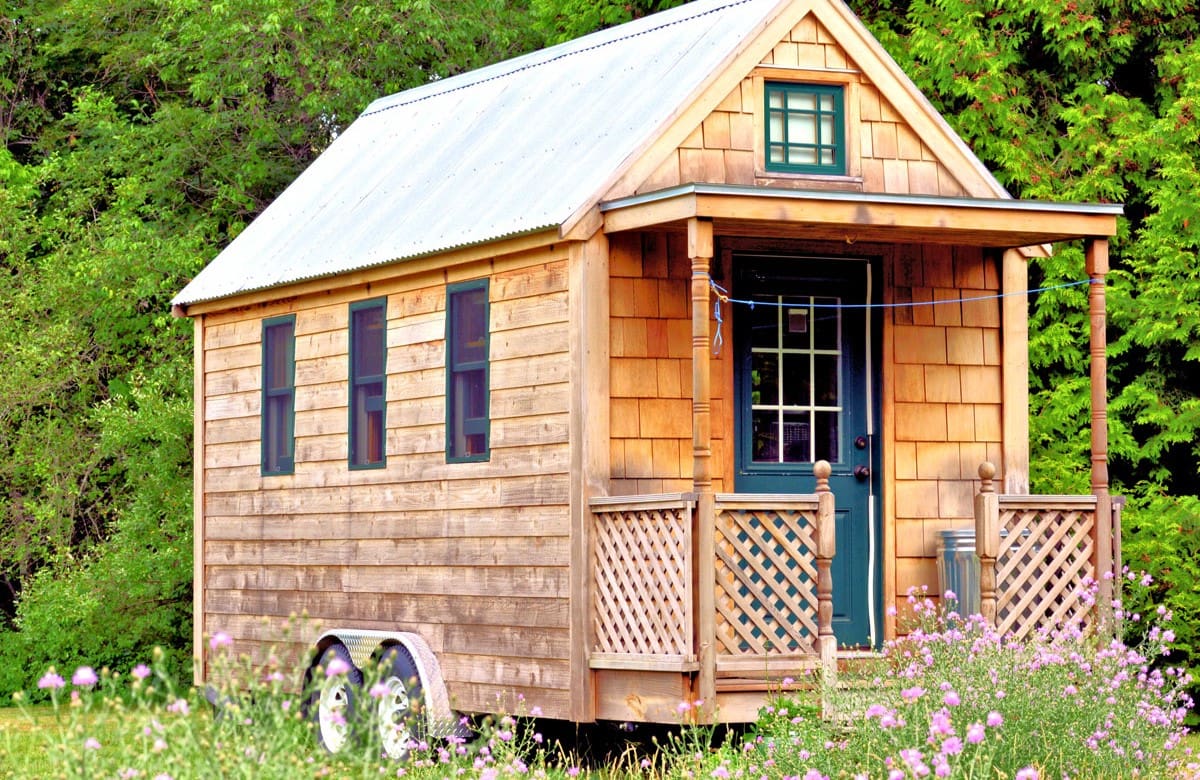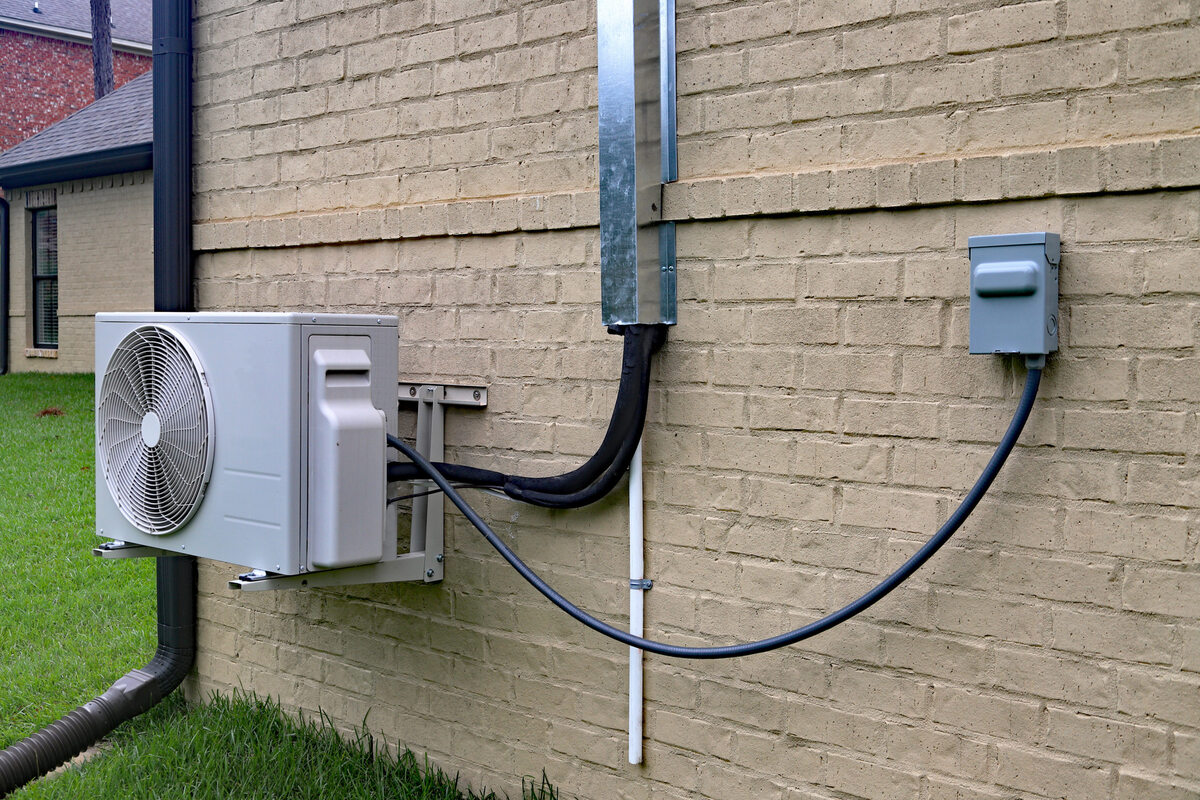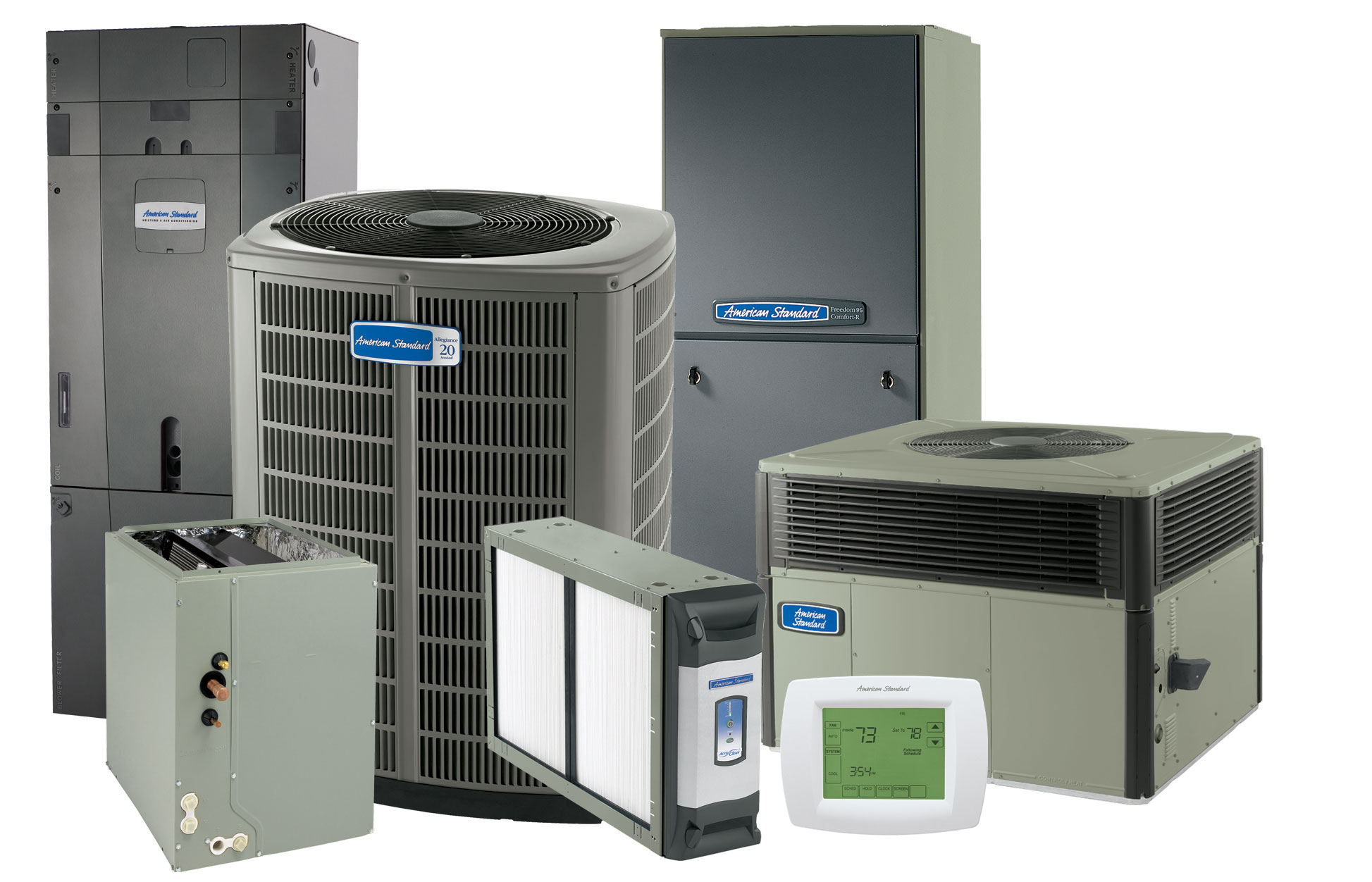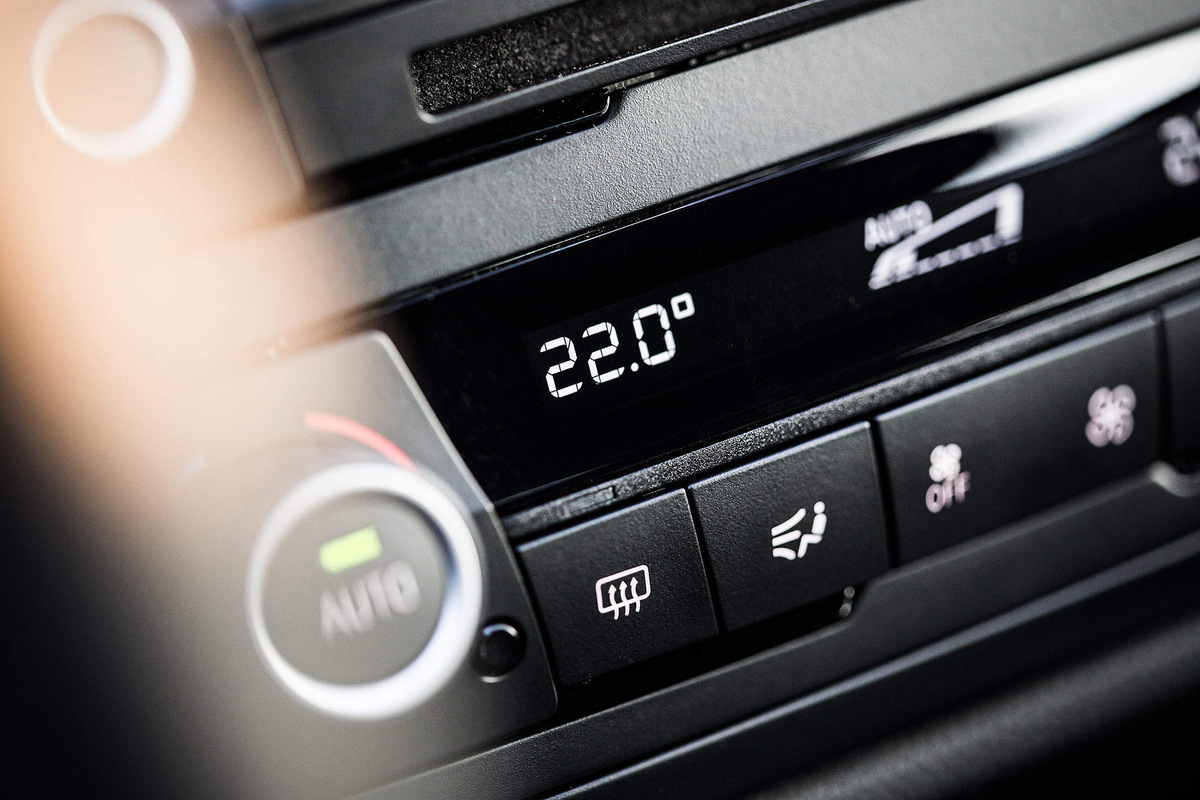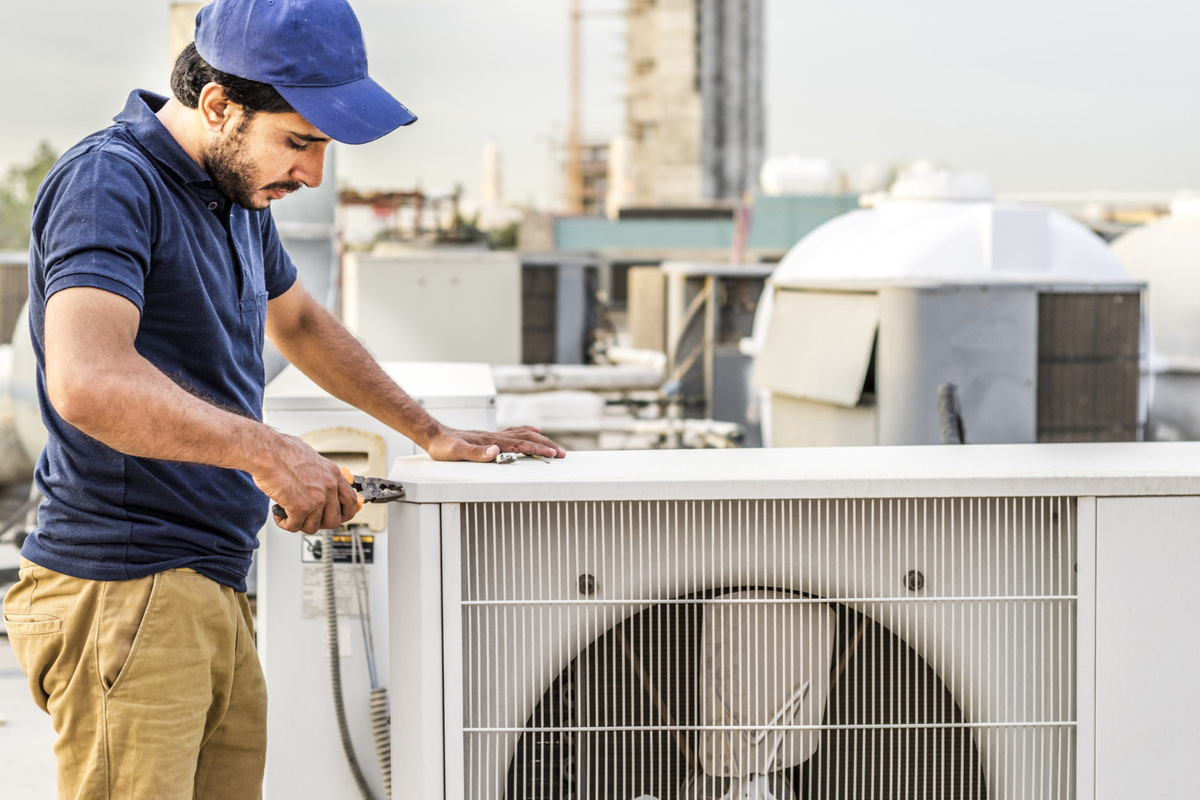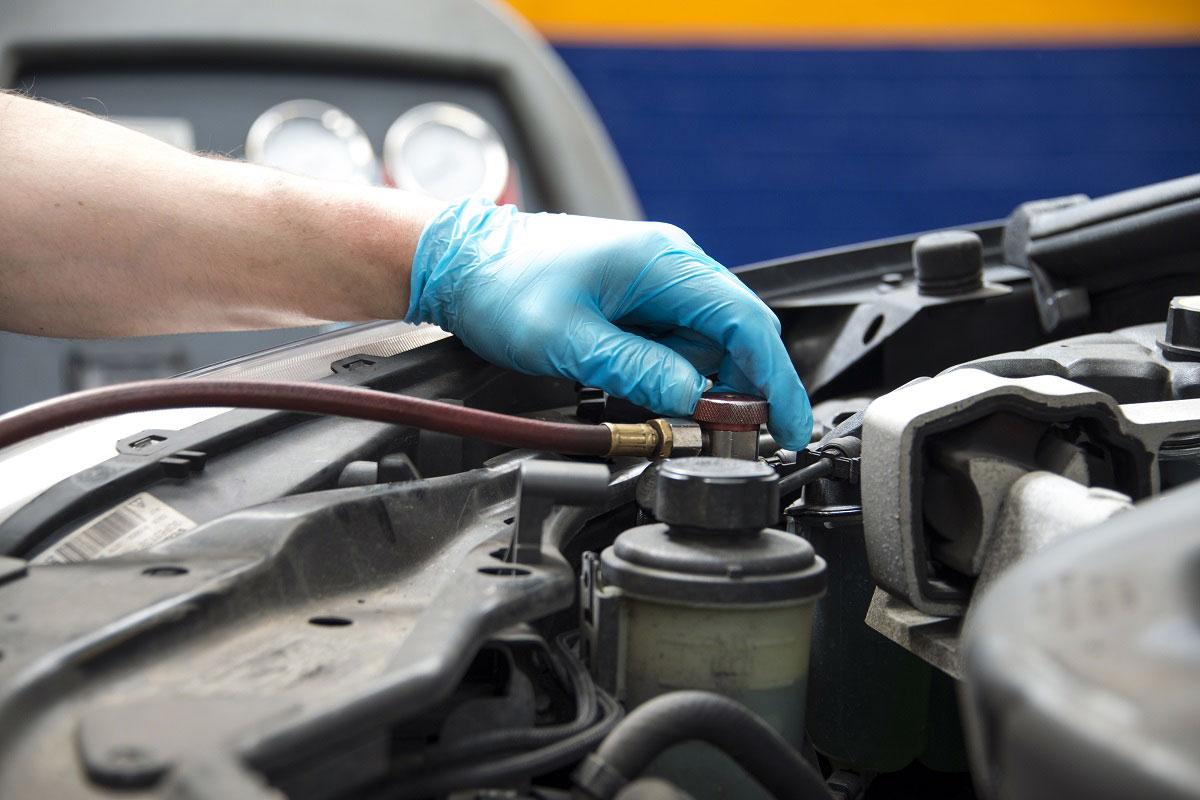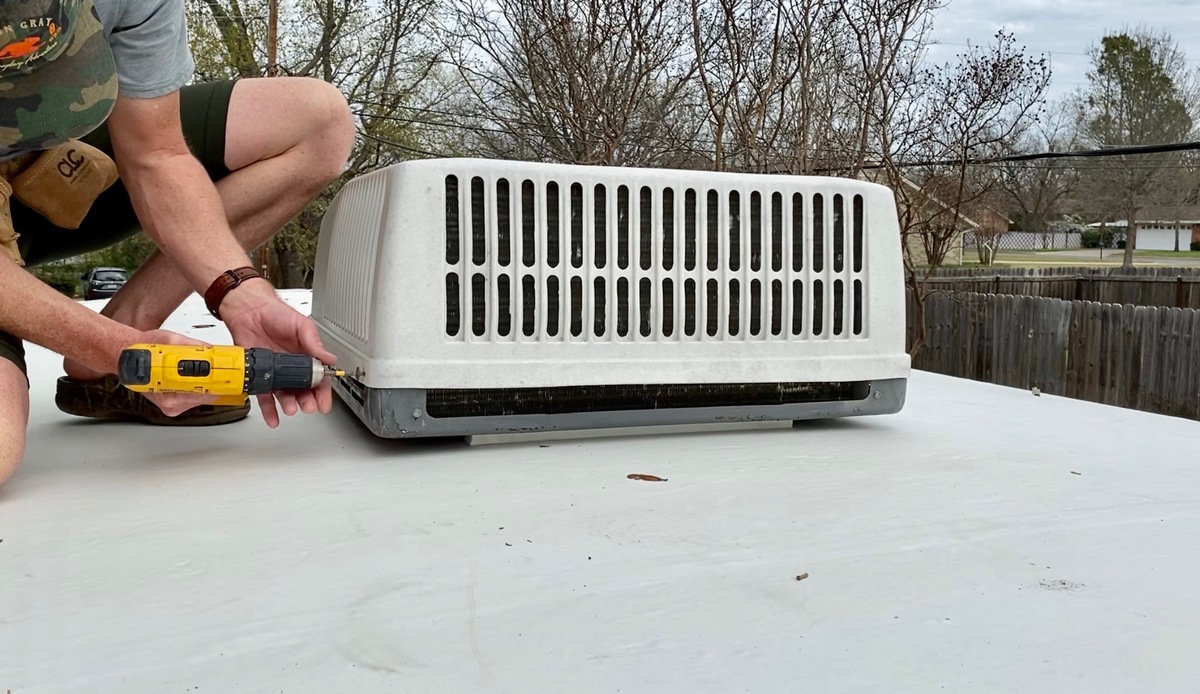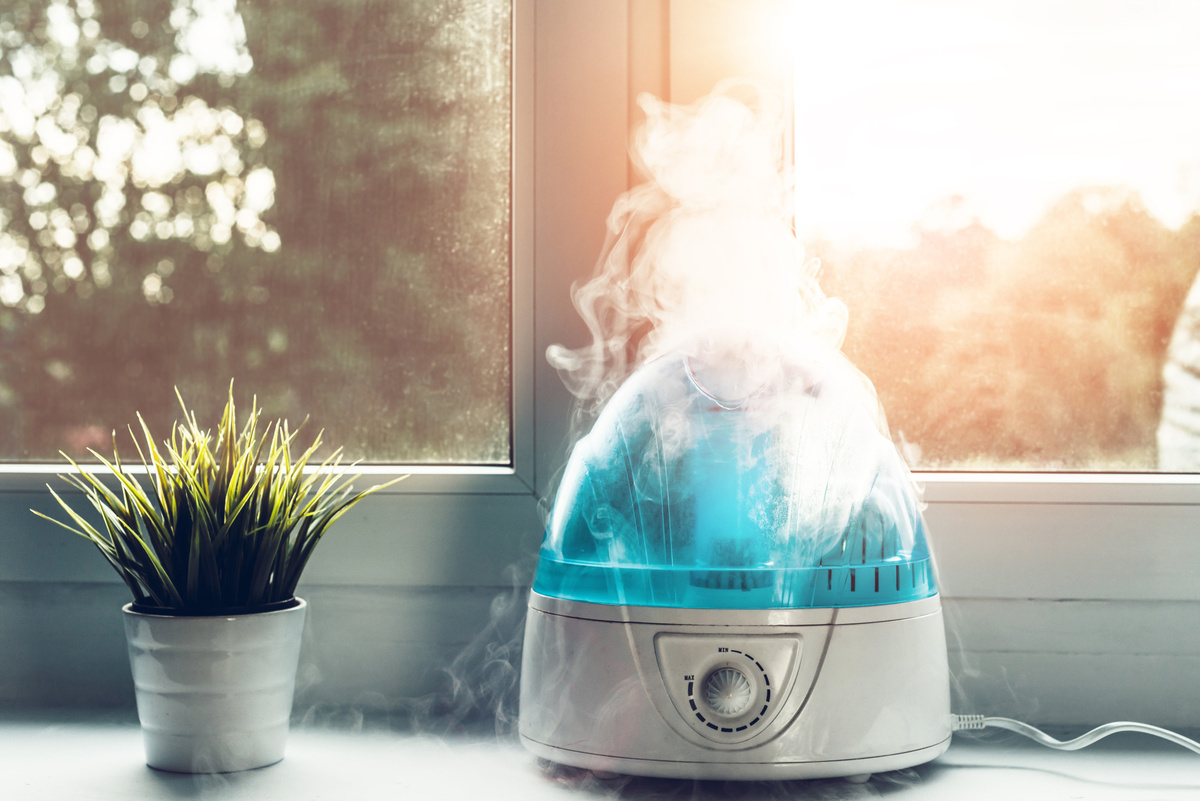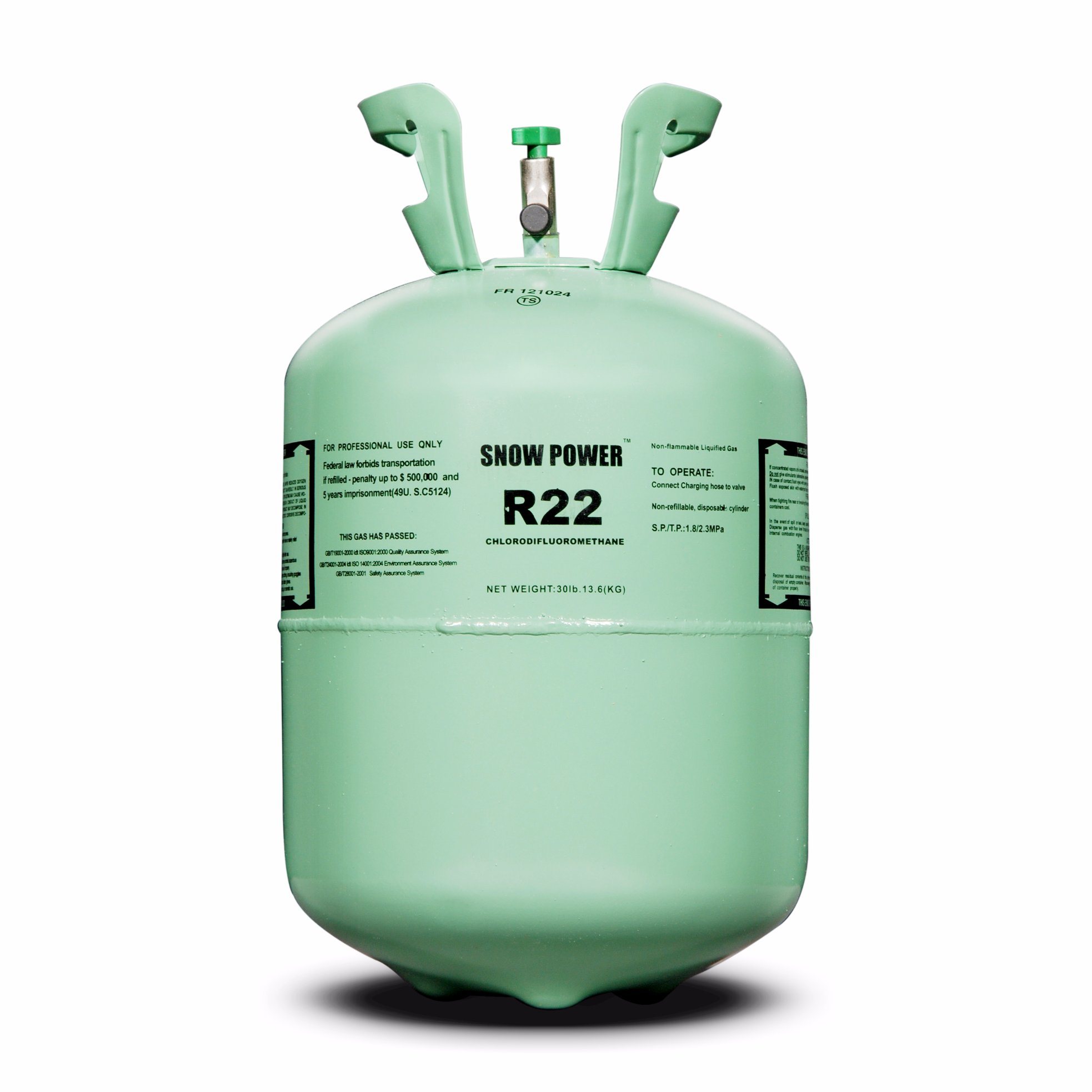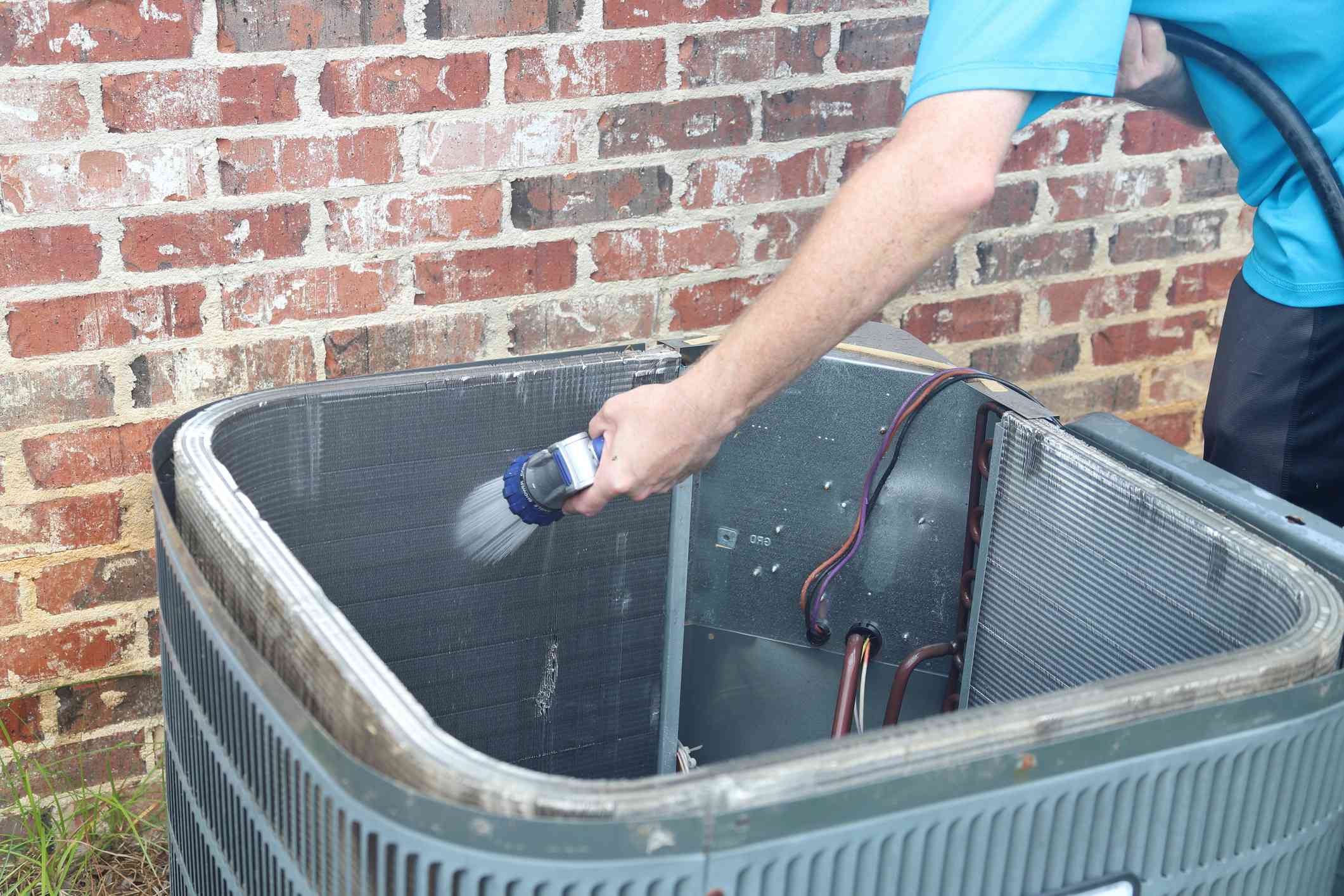Home>Home Maintenance>How To Make Air Conditioning More Efficient
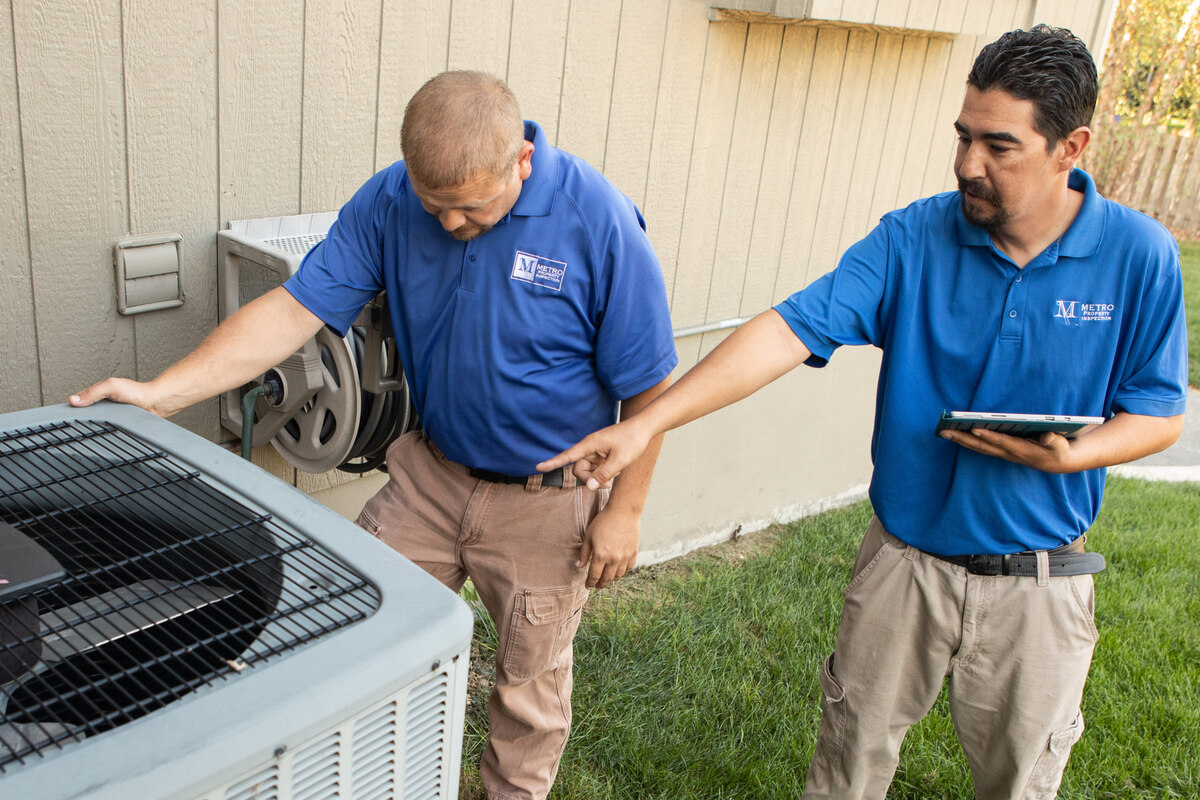

Home Maintenance
How To Make Air Conditioning More Efficient
Modified: March 6, 2024
Learn how to make your air conditioning system more efficient with our expert home maintenance tips. Save energy and money with these simple tricks.
(Many of the links in this article redirect to a specific reviewed product. Your purchase of these products through affiliate links helps to generate commission for Storables.com, at no extra cost. Learn more)
Introduction
Welcome to the world of home maintenance! In this article, we will dive into the world of air conditioning efficiency and explore various tips and tricks to make your cooling system more energy-efficient. As the temperatures rise, keeping our homes cool becomes a top priority, but the energy consumption of air conditioning can also rise significantly. By implementing the right strategies, we can not only save on our utility bills but also reduce our carbon footprint.
Understanding air conditioning efficiency is crucial before we delve into the tips and tricks. The efficiency of an air conditioning system is measured by its SEER rating (Seasonal Energy Efficiency Ratio). The higher the SEER rating, the more efficient the system is. Older systems typically have lower SEER ratings, which means they consume more energy to cool the same space compared to newer models.
Now, let’s explore some effective tips for improving air conditioning efficiency in your home:
Key Takeaways:
- Regular maintenance, proper insulation, and efficient thermostat usage are key to making air conditioning more energy-efficient and cost-effective. These simple strategies can help keep your home cool while reducing your environmental impact.
- Integrating smart home technology and choosing the right cooling system can optimize energy efficiency and enhance overall comfort. By leveraging advanced features and automation, you can save on energy bills and enjoy a cool, environmentally friendly home.
Read more: Who Makes Goodman Air Conditioning
Understanding Air Conditioning Efficiency
Before we jump into ways to improve air conditioning efficiency, it’s important to have a clear understanding of how the efficiency of your cooling system is measured.
The Seasonal Energy Efficiency Ratio (SEER) is the rating that determines the efficiency of an air conditioning system. It is calculated by dividing the cooling output of the system over a typical cooling season by the energy it consumes in watt-hours. The higher the SEER rating, the more efficient the system is.
If your current air conditioning system has a low SEER rating, it means that it consumes more energy to cool your home than a system with a higher rating. Upgrading to a higher SEER-rated system can lead to significant energy savings in the long run.
In addition to SEER rating, it’s essential to consider the size and capacity of your air conditioning unit. A system that is too small for your home will have to work harder and consume more energy to cool the space adequately. On the other hand, an oversized system will cycle on and off frequently, leading to energy waste and reduced comfort.
Another factor in air conditioning efficiency is proper installation. An improperly installed system can result in air leaks, inadequate airflow, and reduced efficiency. It’s crucial to hire a qualified professional to install your air conditioning unit to ensure optimal performance.
Now that we have a basic understanding of air conditioning efficiency, let’s explore some practical tips to make your cooling system more efficient and cost-effective.
Tips for Improving Air Conditioning Efficiency
To keep your home comfortable while minimizing energy usage and utility costs, follow these tips to improve air conditioning efficiency:
- Regular Maintenance and Cleaning: Schedule regular maintenance to ensure your air conditioning system is running smoothly. Clean or replace air filters every 30-60 days to prevent airflow restrictions and improve efficiency. Additionally, clean the condenser coils and remove any debris around the outdoor unit to optimize performance.
- Proper Insulation and Sealing: Ensure your home is properly insulated to prevent cooled air from escaping and hot air from infiltrating. Insulate windows, doors, and ductwork, and seal any gaps or cracks. This will help maintain a consistent temperature and reduce the workload on your air conditioning system.
- Efficient Thermostat Usage: Use a programmable thermostat to set temperature schedules that align with your daily routine. Raise the temperature when you’re away from home and lower it before you return. Smart thermostats can even learn your habits and adjust settings automatically to maximize energy savings.
- Ventilation Improvements: Ensure proper ventilation in your home to reduce indoor humidity and heat buildup. Use exhaust fans in the kitchen and bathroom to remove heat and moisture. You can also consider installing a whole-house ventilation system to circulate fresh air while minimizing energy loss.
- Air Filter Replacement: Regularly replacing air filters not only improves indoor air quality but also helps your air conditioning system function efficiently. Clogged filters restrict airflow, forcing the system to work harder. Follow the manufacturer’s guidelines for filter replacement.
- Window Coverings and Shading: Use blinds, curtains, or shades to block out direct sunlight during the hottest parts of the day. This can significantly reduce the amount of heat that enters your home, easing the load on your air conditioning system.
- Efficient Cooling System Selection: When purchasing a new air conditioning unit, consider its SEER rating. Higher-rated systems may have a higher upfront cost but will provide long-term energy savings. Consulting with a professional can help determine the right system size and features for your home.
- Smart Home Integration: Opt for a smart home integration system that allows you to control your air conditioning remotely. This way, you can adjust settings based on your needs, even when you’re away from home. Some systems also offer energy usage reports, helping you track and optimize your energy consumption.
By implementing these tips, you can enhance the efficiency of your air conditioning system, reduce energy usage, and enjoy a more comfortable and cost-effective home.
Regular Maintenance and Cleaning
Regular maintenance and cleaning are essential to ensure your air conditioning system operates efficiently. Neglecting maintenance can lead to reduced performance, higher energy consumption, and even system failures. Follow these steps to keep your cooling system in top shape:
- Clean or Replace Air Filters: Air filters play a crucial role in maintaining healthy indoor air quality and optimizing the performance of your air conditioning unit. Over time, dust and debris accumulate on the filters, causing airflow restrictions and decreased efficiency. Check the filters every 30-60 days and clean or replace them as needed. If you have pets or allergies, you may need to replace the filters more frequently.
- Clean the Condenser Coils: The condenser coils, located in the outdoor unit, are responsible for transferring heat from inside your home to the outside. Over time, dirt, leaves, and other debris can accumulate on the coils, hindering the heat transfer process. To clean the condenser coils, turn off the power to the unit, remove any visible debris, and use a gentle stream of water to rinse off remaining dirt. If the coils are heavily soiled, it may be best to contact a professional HVAC technician.
- Remove Debris Around the Outdoor Unit: Ensure that the area surrounding the outdoor unit is clear of debris, such as grass, leaves, or branches. This allows for proper airflow and heat dissipation. Trim any vegetation at least two feet away from the unit to prevent airflow obstruction and potential damage to the system.
- Schedule Professional Maintenance: It’s a good idea to have your air conditioning system professionally inspected and maintained at least once a year. HVAC technicians can identify any issues, clean the system thoroughly, check refrigerant levels, and ensure that all components are functioning properly. Regular maintenance can extend the lifespan of your unit and boost its efficiency.
By incorporating regular maintenance and cleaning into your air conditioning routine, you can ensure that your system operates at its peak performance, improves energy efficiency, and delivers optimal cooling comfort.
Proper Insulation and Sealing
Proper insulation and sealing are vital for maintaining a comfortable indoor environment and maximizing air conditioning efficiency. When your home is well-insulated and sealed, you can prevent unwanted heat transfer and air leaks, allowing your cooling system to work more efficiently. Here are some tips to improve insulation and sealing:
- Insulate the Attic: The attic is a significant source of heat gain during the summer and heat loss during the winter. Adding insulation to the attic helps create a thermal barrier, preventing hot air from entering your home. Consider using insulation with a high R-value, such as fiberglass or cellulose, to achieve optimal results.
- Seal Air Leaks: Gaps and cracks in windows, doors, ductwork, and walls allow conditioned air to escape and hot air to infiltrate your home. Use caulking and weatherstripping to seal any air leaks. Pay attention to areas around windows and doors, electrical outlets, and plumbing penetrations. Insulating and sealing ductwork can also prevent air loss and improve the efficiency of your cooling system.
- Upgrade Windows and Doors: If your windows and doors are old and drafty, consider upgrading to energy-efficient options. Look for windows and doors with a low U-factor and multiple panes of glass with gas fillings, such as argon or krypton. These features help minimize heat transfer and improve insulation.
- Use Window Film or Reflective Coatings: Window film or reflective coatings can help reduce heat gain by reflecting sunlight away from your home. This can be especially beneficial for windows that receive direct sunlight. Window coverings, such as blinds or shades, can also provide additional insulation and help prevent heat transfer.
- Insulate Exposed Pipes: Insulating exposed pipes can prevent heat gain in the water supply, keeping the water cooler and reducing the workload on your air conditioning system. This is particularly important in areas where pipes are exposed to sunlight or hot outdoor temperatures.
By improving insulation and sealing in your home, you can minimize heat transfer, reduce air leaks, and create a more comfortable and energy-efficient environment. Consider conducting a thorough energy audit to identify any areas that require insulation or sealing improvements.
Read more: How To Make An Air Mattress More Comfortable
Efficient Thermostat Usage
The way you use your thermostat can have a significant impact on the efficiency of your air conditioning system and your overall energy consumption. By following some simple guidelines, you can optimize your thermostat settings for maximum efficiency and comfort:
- Set Temperature Wisely: Setting your thermostat to a higher temperature when you’re not at home can save energy and reduce cooling costs. Consider raising the temperature by a few degrees during the day and lowering it back to your desired comfort level when you return. With a programmable thermostat, you can automate temperature adjustments based on your schedule.
- Use Temperature Zones: If your home has multiple zones, take advantage of individual temperature settings for each zone. This allows you to cool only the areas that are occupied, reducing energy waste. Adjusting the temperature in unoccupied rooms can help optimize efficiency and save on energy costs.
- Avoid Drastic Temperature Changes: Resist the temptation to set your thermostat to a very low temperature in an attempt to cool your home faster. Your air conditioning system works at a consistent pace, and setting a significantly lower temperature will not cool your home any quicker. It will only result in energy waste and potential discomfort.
- Utilize Fan Mode: Use the “fan” mode on your thermostat to circulate air throughout your home. This can help create a more even temperature distribution and reduce the workload on your cooling system. Remember to turn off the fan when you leave the room or the house to avoid unnecessary energy consumption.
- Consider Smart Thermostats: Smart thermostats offer advanced features and allow remote control of your air conditioning settings. They can learn your preferences, adapt to your lifestyle, and even provide energy usage reports. Some models can be connected to your smartphone or smart home system, giving you the convenience to adjust settings anytime, anywhere.
- Take Advantage of Energy-Saving Modes: Many air conditioning systems come equipped with energy-saving modes, such as “Eco” or “Sleep” modes. These modes adjust temperature settings and fan speeds to optimize energy efficiency. Check your user manual or consult a professional to understand the energy-saving features of your specific system.
By adopting efficient thermostat usage habits, you can enjoy a comfortable indoor environment while minimizing energy consumption and reducing your cooling costs.
Clean or replace your air filters regularly to ensure proper airflow and efficiency. Clogged filters make your AC work harder and use more energy.
Ventilation Improvements
Proper ventilation plays a crucial role in maintaining indoor air quality and promoting air conditioning efficiency. By improving ventilation in your home, you can reduce the build-up of heat and humidity, enhance airflow, and create a healthier living environment. Here are some tips for ventilation improvements:
- Use Exhaust Fans: Install exhaust fans in high-moisture areas such as the kitchen and bathroom. These fans help remove excess heat, moisture, and odors from the air. Running the fans while cooking or showering can prevent these activities from adding unnecessary warmth and humidity to your home.
- Install Attic Ventilation: Inadequate attic ventilation can allow heat to build up, increasing the burden on your air conditioning system. Consider installing attic vents, such as ridge vents or soffit vents, to facilitate airflow and release trapped warm air. Proper attic ventilation can help keep your home cooler and reduce energy consumption.
- Use Natural Ventilation: Take advantage of cooler evening and early morning temperatures by opening windows and allowing a cross breeze to flow through your home. This can help refresh the indoor air and reduce reliance on your air conditioning system. However, be mindful of outdoor air quality and noise levels in your area.
- Consider Whole-House Ventilation: If your home lacks natural cross ventilation, consider installing a whole-house ventilation system. These systems exchange stale indoor air with fresh outdoor air while minimizing energy loss. Energy recovery ventilation (ERV) and heat recovery ventilation (HRV) systems are common types of whole-house ventilation that help maintain indoor air quality while maximizing energy efficiency.
- Seal Ductwork: Leaky air ducts result in inefficient cooling and can lead to wasted energy. Inspect your ductwork for any gaps, cracks, or loose connections. Seal these areas using specialized duct sealant or metal tape to ensure that conditioned air reaches its intended destination without escaping through leaks.
Improving ventilation in your home not only enhances air circulation and cooling efficiency but also helps remove pollutants and allergens, creating a healthier indoor environment. Consult with a professional if you need guidance on the best ventilation options for your home.
Air Filter Replacement
Regular air filter replacement is crucial for maintaining the efficiency and effectiveness of your air conditioning system. Air filters help trap dust, pollen, pet dander, and other airborne particles, improving indoor air quality and preventing buildup on critical system components. Here’s what you need to know about air filter replacement:
- Follow the Manufacturer’s Guidelines: Refer to the manufacturer’s instructions or user manual to determine how often the air filter should be replaced. This will vary depending on the type of filter, the specific system, and the level of air pollution in your area. Some filters may need to be replaced monthly, while others can last up to three months.
- Inspect the Filter Regularly: Periodically check the condition of your air filter to assess its cleanliness and determine if replacement is necessary. Hold the filter up to a light source – if you can’t see light passing through it, it’s likely clogged and should be replaced.
- Choose the Right Filter Type: There are various types of air filters available, ranging from basic fiberglass filters to high-efficiency pleated filters. Consider the specific needs of your household, such as allergies or asthma, and choose a filter with a MERV (Minimum Efficiency Reporting Value) rating appropriate for your system. Higher MERV ratings indicate better filtration, but they can also restrict airflow, so be mindful of your system’s capabilities.
- Consider Washable Filters: Instead of disposable filters, you may opt for washable or reusable filters. These filters can be cleaned and reused, reducing waste and saving money over time. However, be sure to follow the manufacturer’s instructions for proper cleaning and ensure the filter is completely dry before reinstalling it.
- Timing Air Filter Replacement: Air filter replacement is often recommended before the start of the cooling season and again midway through the season. This helps maintain optimal airflow and filtration efficiency. However, factors like household size, pets, and environmental conditions may require more frequent replacement.
Regular air filter replacement improves air quality, prevents system strain, and enhances the overall efficiency of your air conditioning system. Make it a habit to check and replace your filters as needed, and consult with an HVAC professional if you have specific concerns or questions regarding air filter maintenance or selection.
Window Coverings and Shading
Window coverings and shading can play a significant role in improving the efficiency of your air conditioning system by reducing heat gain from the sun. By blocking out excessive sunlight, you can minimize the need for your cooling system to work harder to maintain a comfortable indoor temperature. Here are some tips for using window coverings and shading effectively:
- Blinds and Shades: Installing blinds or shades is one of the most effective ways to control the amount of sunlight entering your home. Close them during the hottest parts of the day to prevent direct sunlight from heating up the space. You can also adjust them to allow diffused natural light while still blocking the direct heat.
- Curtains or Drapes: Thick, heavy curtains or drapes with a light-colored lining can help insulate your home and block both heat and sunlight. Close them during the hottest hours of the day to keep your home cooler. For added efficiency, consider using curtains with thermal or blackout lining that provide extra insulation to keep heat out.
- Window Films: Window films or reflective coatings can be applied directly to the glass to block out a significant amount of heat from the sun. These films can reduce heat gain while still allowing natural light to filter into your home. Look for films with a high Solar Heat Gain Coefficient (SHGC) rating to maximize their efficiency.
- Awnings: Installing awnings on the exterior of your home can create shade and prevent direct sunlight from hitting your windows. This can significantly reduce heat transfer and keep your home cooler. Choose awnings with a material that provides effective shading while still allowing air circulation.
- Exterior Sunshades or Solar Screens: These shading options are mounted on the outside of your windows. They are designed to block the sun’s rays, keeping your home cooler and reducing the demand on your air conditioning system. Solar screens are made of a mesh-like material that filters out sunlight while maintaining visibility from the inside.
- Plant Trees or Install Shade Structures: Strategically planting trees or installing shade structures, such as pergolas or canopies, can provide natural shade and reduce the amount of direct sunlight that enters your home. When choosing trees, opt for deciduous varieties that provide shade in the summer but allow sunlight through in the winter when their leaves fall.
By utilizing window coverings and shading techniques, you can effectively manage the amount of heat and sunlight that enters your home, reducing the workload on your air conditioning system and improving energy efficiency.
Efficient Cooling System Selection
Choosing the right cooling system for your home is crucial for optimizing energy efficiency and maintaining a comfortable indoor environment. When selecting a new cooling system or upgrading your existing one, keep the following factors in mind:
- SEER Rating: The Seasonal Energy Efficiency Ratio (SEER) measures the cooling output of an air conditioning system relative to the energy it consumes. Higher SEER ratings indicate greater efficiency. Look for systems with a SEER rating of 14 or higher for optimal energy savings.
- Proper Size and Capacity: Ensuring that your cooling system is correctly sized for your home is vital. An oversized unit will cycle on and off too frequently, reducing its efficiency and leading to increased wear and tear. Conversely, an undersized unit will struggle to cool your home adequately. Consult with a professional to determine the correct size and capacity based on factors such as square footage, insulation, and climate zone.
- Energy-Efficient Features: Look for cooling systems that offer energy-efficient features such as variable-speed air handlers, two-stage compressors, and programmable thermostats. These features allow for better temperature control, more efficient operation, and reduced energy consumption. Energy Star certified systems are also worth considering as they meet strict energy efficiency guidelines.
- Zoning Options: If your home has different cooling needs in different areas, consider a zoning system. Zoning allows for independent temperature control in different zones of your home, optimizing comfort and reducing energy waste. This is especially beneficial for multi-story homes or homes with large open spaces.
- Professional Installation: Proper installation is crucial for the efficient and reliable operation of your cooling system. Hire a qualified HVAC professional to ensure the system is correctly installed, ductwork is properly sealed, and airflow is optimized for maximum efficiency.
- Schedule Regular Maintenance: Once you have a new cooling system in place, be sure to schedule regular maintenance to keep it running efficiently. Professional maintenance should include tasks such as inspecting and cleaning components, checking refrigerant levels, and ensuring proper airflow. Regular maintenance will help extend the lifespan of your system and maintain its efficiency over time.
Investing in an energy-efficient cooling system and ensuring it is properly installed and maintained will not only save you money on energy bills but also provide a more comfortable and environmentally friendly home.
Smart Home Integration
Integrating your air conditioning system into a smart home setup can offer numerous benefits in terms of energy efficiency, convenience, and comfort. Smart home technology allows you to control your cooling system remotely and automate its operation based on your preferences and daily routine. Here’s how you can leverage smart home integration to optimize your cooling system:
- Smart Thermostats: Install a smart thermostat to gain control over your air conditioning system from anywhere using your smartphone or other smart devices. Smart thermostats offer features such as temperature scheduling, adaptive learning, and remote control. These features enable you to adjust temperature settings to maximize energy savings without sacrificing comfort.
- Voice-activated Assistants: Connect your air conditioning system to voice-activated assistants like Amazon Alexa or Google Assistant. This allows you to control your cooling system with voice commands, making it effortless to adjust temperature settings or activate specific cooling modes without even lifting a finger.
- Integration with Other Smart Devices: Connect your air conditioning system to other smart home devices, such as occupancy sensors or window sensors, to automate energy-saving routines. For example, the cooling system can automatically adjust the temperature when you leave the house or when a window is detected to be open, helping to reduce energy waste.
- Energy Usage Monitoring: Many smart thermostats provide energy usage reports, offering insights into your cooling system’s energy consumption. These reports help you identify energy-wasting patterns and adjust temperature settings accordingly to improve efficiency and save on utility bills.
- Smart Home Energy Management Systems: Consider implementing a comprehensive smart home energy management system that integrates your cooling system, lighting, and other energy-consuming devices. These systems provide a centralized hub to monitor and control your home’s energy consumption, allowing you to make informed decisions to reduce energy usage and optimize efficiency.
- Geofencing Technology: Geofencing allows your smart home system to detect when you’re leaving or approaching your home based on your smartphone’s location. This feature can automatically adjust the temperature settings, ensuring that your home is at the desired comfort level when you arrive while saving energy when you’re away.
By leveraging smart home integration, you can take advantage of advanced features and automation to optimize your cooling system’s efficiency, reduce energy consumption, and enhance overall comfort in your home. Invest in compatible smart devices and explore the various options available to suit your specific needs and preferences.
Conclusion
Maintaining a cool and comfortable home doesn’t have to be expensive or wasteful in terms of energy. By implementing the right strategies, you can improve the efficiency of your air conditioning system and reduce your environmental impact. We’ve explored various tips and tricks to enhance air conditioning efficiency throughout this article, and here’s a summary of the key points:
Regular maintenance and cleaning, such as replacing air filters and cleaning condenser coils, are essential to keep your air conditioning system running smoothly and efficiently.
Proper insulation and sealing help prevent heat transfer and air leaks, reducing the workload on your cooling system. Pay attention to the attic, windows, doors, and ductwork.
Utilizing your thermostat effectively, such as setting temperature schedules and using programmable thermostats, can significantly improve energy efficiency.
Improving ventilation through exhaust fans, whole-house ventilation systems, and proper duct sealing helps maintain indoor air quality and reduce heat buildup.
Regularly replacing air filters keeps your system running efficiently, improves air quality, and prevents airflow restrictions.
Utilizing window coverings, shading, and reflective coatings can reduce heat gain from the sun and lower the cooling demand of your home.
Choosing an energy-efficient cooling system with the right size, capacity, and features, installed professionally, enhances energy efficiency and performance.
Integrating your air conditioning system into a smart home setup allows for remote control, automation, and energy monitoring, optimizing efficiency and comfort.
By implementing these tips and making wise choices, you can create a more energy-efficient home, reduce your carbon footprint, and save on utility bills. Remember to perform regular maintenance, monitor energy usage, and stay informed about advancements in air conditioning technology for continued energy savings and comfort.
So, what are you waiting for? Start implementing these strategies today and enjoy a cool, comfortable, and energy-efficient home!
Frequently Asked Questions about How To Make Air Conditioning More Efficient
Was this page helpful?
At Storables.com, we guarantee accurate and reliable information. Our content, validated by Expert Board Contributors, is crafted following stringent Editorial Policies. We're committed to providing you with well-researched, expert-backed insights for all your informational needs.
